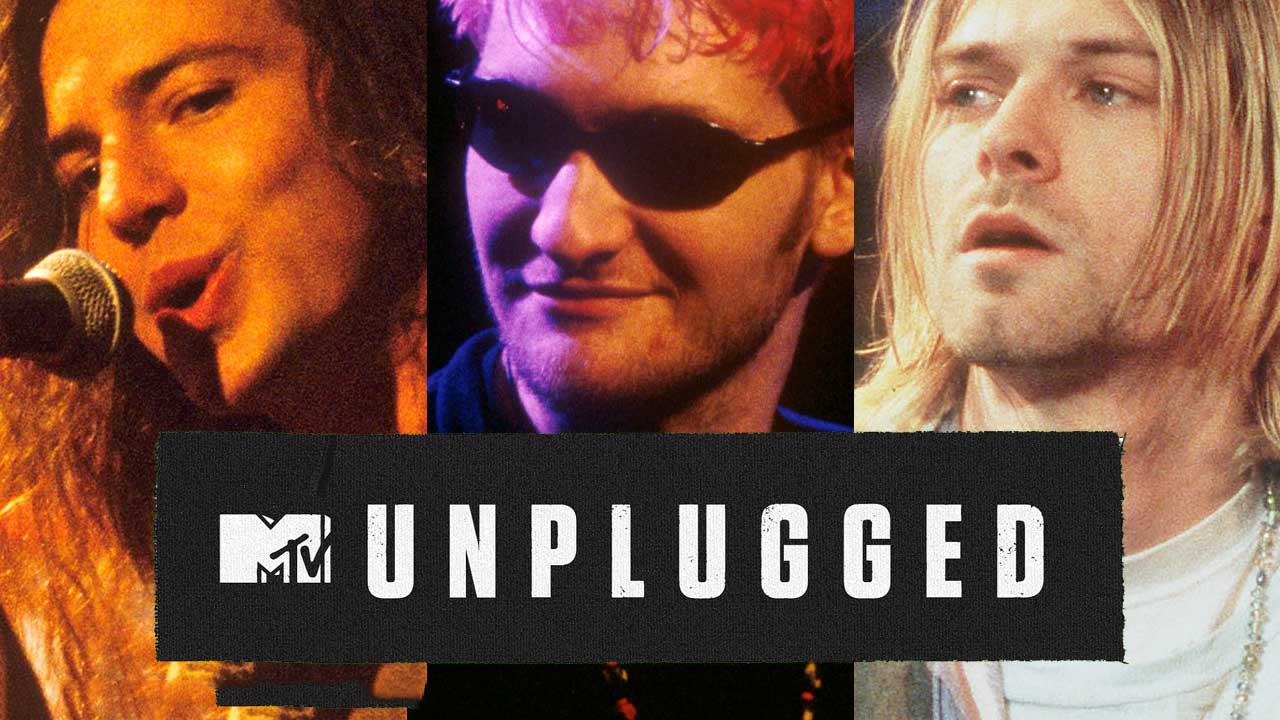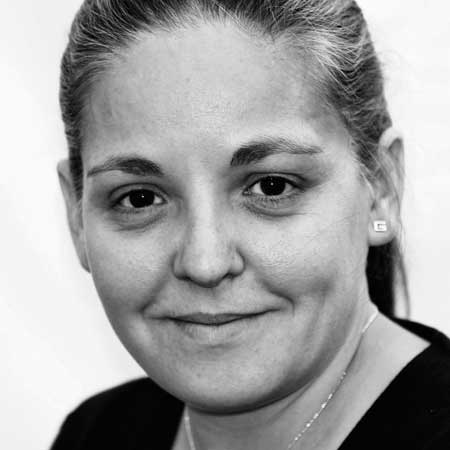For all the talk of the death of hair metal, the rise of grunge and the eventual take-over of nu metal, there was one phenomenon that encompassed all the facets of 90s rock. Its name was Unplugged, and it was a telly programme. Not just any telly programme, y’understand – this was a show where bands could go and display their songwriting and musicianly chops.
The premise was extraordinarily simple – take one rock band (the louder the better), force them to leave their electric guitars and Marshall stacks at the door and then allow them to perform their songs in an acoustic manner, the new arrangements often providing a startling insight into the songs themselves and, by extension, the band.
Popular opinion has it that the genesis of the Unplugged programme harks back to the 1989 MTV Music Video Awards, where Bon Jovi (well, frontman Jon Bon Jovi and guitarist Richie Sambora) took to the stage armed with only their acoustics and delivered a sparkling new ‘unplugged’ version of Wanted Dead Or Alive and a slower, more melancholic take on their monster hit Livin’ On A Prayer. The crowd went nuts, and some bright MTV executive spark realised that they could make a fully-fledged programme if they harnessed this idea. After all, grabbing a couple of acoustics and performing has long been a staple of rock bands on the road, be it in hotel rooms or on tour buses.
Some, however, credit the origin of Unplugged to a performance given by The Who’s Pete Townshend at Amnesty International’s charity show The Secret Policeman’s Ball back in June 1979. Martin Lewis, the show’s producer, managed to convince the traditionally Telecaster-slammin’ Townshend to leave the racket behind and perform The Who classics Pinball Wizard and Won’t Get Fooled Again stripped down with just an acoustic guitar.
This, unsurprisingly, was a success. So when Lewis was putting together the next benefit some two years later, he used the same idea, and thus in 1981 for The Secret Policeman’s Other Ball, there were ‘unplugged’ performances from the likes of Sting, Phil Collins and Bob Geldof.
But, again, even in the late 70s this wasn’t necessarily a new concept. Just think of Led Zeppelin: a big part of their appeal had always been based upon their ability to mix light and shade, and they had been performing a wholly acoustic segment as part of their shows since the early 70s.
However, once the Unplugged programme was up and running, it seemed that anyone who was anyone wanted a piece of it. It seemed to be a way for loud rock bands to say: “Look, we have a sensitive side, our songs can hold up to rigorous reinterpretation.” It offered a platform for established artist to reintroduce themselves to a new MTV audience without having to embarrass themselves with a dodgy promo clip (which, chances are, the network wouldn’t play anyway).
For the old guard (sorry guys), Unplugged performances brought the likes of Neil Young, Eagles, Eric Clapton and Bob Dylan firmly back to centre-stage. It was a platform for everyone to excel and show off in an understated fashion, from Paul McCartney to Pearl Jam, from REM to Nirvana.
McCartney’s Unplugged is fun, and highlights the fact that even the greatest of musicians can get it wrong. Sir Paul commits the ultimate faux pas and forgets the words to The Beatles’ We Can Work It Out. He halts the band, laughs and tries it again – this time getting them right. It’s also this off-the-cuff informality that has proved a winning formula along with hearing the songs you love in a different format.
However, not all artists are as carefree about their performance as McCartney. It has been stated that when Neil Young recorded his Unplugged set, he had to redo one of his songs twice, and each time he gave his drummer a hard time for playing too fast.
Eric Clapton’s 1996 performance was a revelation – the blues veteran completely reworked his material to fit the format. Derek & The Dominos’ Layla was rendered virtually unrecognisable, the searing trademark guitar riff of the original having been replaced with lolloping, almost swing-time acoustic strumming, while the melacholic lament Tears In Heaven could have been written explicitly for the format, were it not for the tragic circumstances in which it was conceived (Clapton wrote it in the aftermath of the death of his young son in an accident).
Crucially, and some might say cynically, Unplugged allowed many bands to fulfil record label obligations and get another album release on the shelves with scant effort – there would be no need to write new material, and the fans would lap it up as they were getting something genuinely different rather than just another repackaged Greatest Hits set.
There was one person who deviated from the acoustic format of the programme, and that was Bruce Springsteen. Rather than going unplugged (which, if you think about it, he’d done for his seminal Nebraska album), Bruce recorded a special Plugged show, complete with electric guitars. But MTV didn’t seem to mind, he is the Boss after all.
As is the case with any television show – especially one that includes a performance of some kind – certain episodes are bound to stick out. Nirvana’s Unplugged appearance has gone down in rock folklore as one of the best, and rightly so.
In what was more than likely his final televised appearance, Kurt Cobain led his bandmates (bolstered in this instance by Pat Smear and Meat Puppets Cris and Curt Kirkwood on guitar, and Lori Goldston on occasional cello) through not only stark interpretations of their best-known material such as Come As You Are, About A Girl, Something In The Way and All Apologies, but also through some extraordinarily well-placed cover versions. The band’s take on David Bowie’s The Man Who Sold The World, Leadbelly’s Where Did You Sleep and three Meat Puppets covers lent the album a real feeling of authenticity and lack of pretension.
This really was Kurt’s album, the devastating sound of an artist struggling with his craft, even after all the success he had experienced with his band. Posthumously released on record as simply Unplugged In New York, it has proved to be as defining a document of Nirvana as any of their three official studio releases.
The grunge contingent fared well under the Unplugged banner – Pearl Jam were enjoying their recording so much that they recorded far too many songs to fit the format of the 30-minute programme. Consequently, a reportedly brilliant rendition of Neil Young’s Rocking In The Free World remains in the MTV vaults – Pearl Jam are one of the few bands who did not release their day without electricity as a stand-alone album.
Like the Nirvana show, Alice In Chains’ Unplugged programme remains hard to watch – and even harder to listen to. The ravages of years of drug abuse had severely taken their toll on vocalist Layne Staley, and it showed. That didn’t stop the band delivering a suberb (albeit subdued) show – focusing their set list on songs from their predominately acoustic Jar Of Flies and Sap EPs. However, it’s Rooster from Dirt and the ominously prescient Heaven Beside You from their self-titled release that remain the most affecting, given the tragedy of knowing that Staley was not long for this world.
Before we give you the totally wrong idea, it wasn’t always doom and gloom on MTV’s Unplugged. The programme often heralded far happier events. On August 9, 1995, an amazing thing occurred. Kiss, the self-proclaimed Gods Of Thunder, put away their make-up, flashbombs and fireworks and submitted to the Unplugged challenge.
Nothing too strange about that, you might think. But the coup was that this was Kiss’s original line-up – Paul Stanley and Gene Simmons had buried the hatchet between themselves and former members Peter Criss and Ace Frehley and asked them to join in for the television taping. The result was so successful that it paved the way for the full-blown Kiss reunion that would result in the recording of Psycho Circus in 1998.
Another reunion that took advantage of the Unplugged format is that of Led Zeppelin stalwarts Jimmy Page and Robert Plant. Fitting, really, when you come to think of it, since it’s entire plausible that their acoustic interludes during Zep’s glory days may well have been part of the inspiration for the programme in the first place. Page and Plant were to go one better than a regular Unplugged show, though – dubbing their 1994 experience as No Quarter: Page & Plant Unledded, the guitarist and vocalist were supplemented by many extra musicians.
It was a canny move by the pair as it gave them a chance to work together without it being unfairly tagged as a ‘Led Zeppelin reunion’. Although their 17-song strong setlist did include a baker’s dozen of Zep numbers.
“The currency by which we began this whole project is by using points of reference from the past but modifying them radically,” explained Plant at the time. “So it’s not like The Song Remains The Same or Knebworth. The whole thing’s been re-thought.”
And that, in essence, was the success of MTV’s Unplugged: rock music, re-thought.

